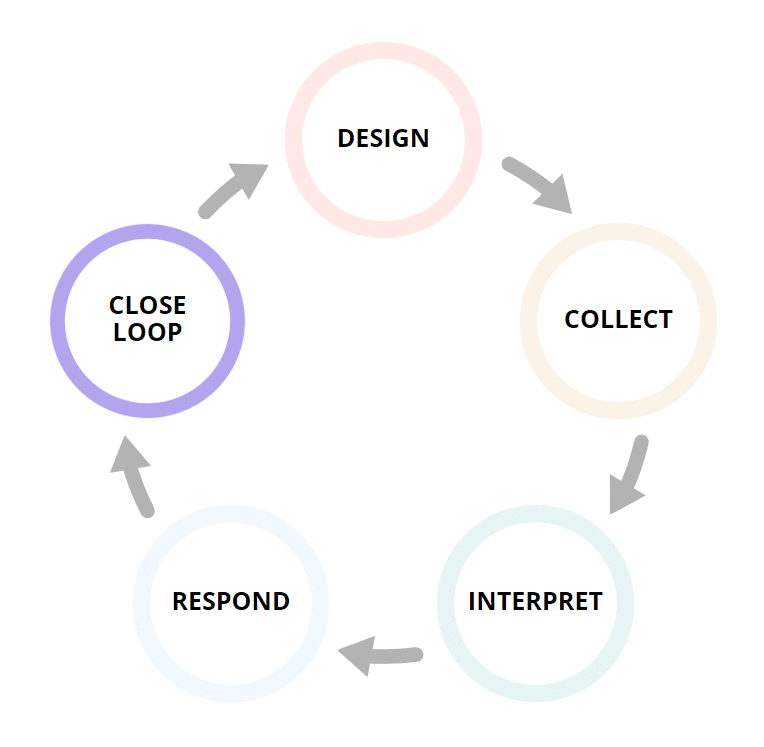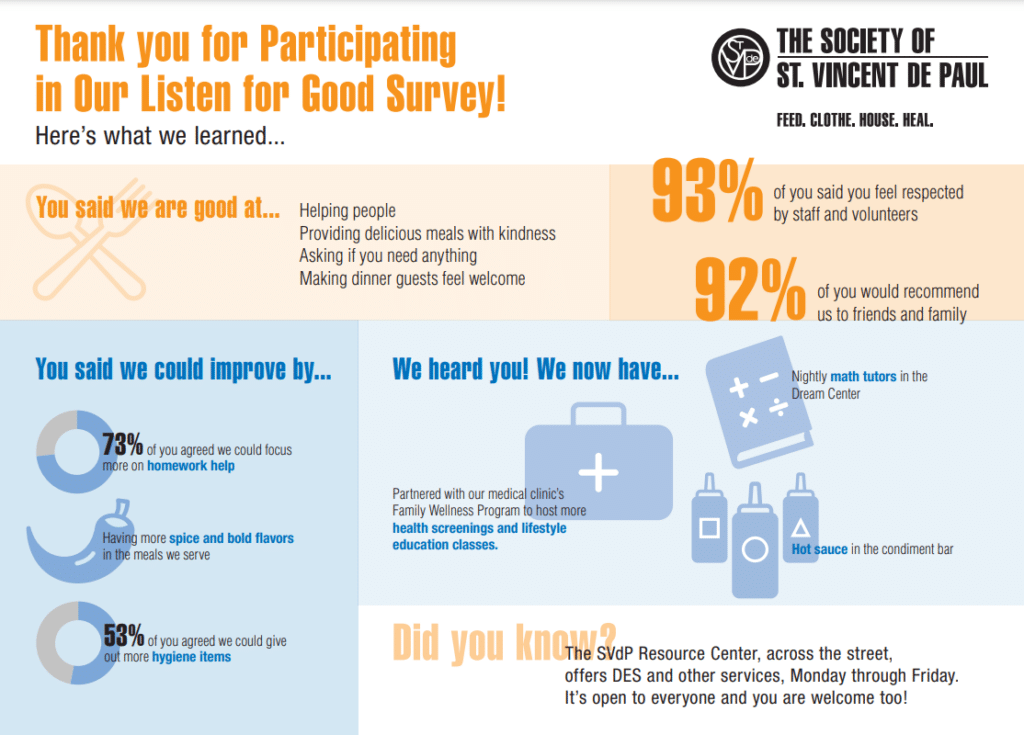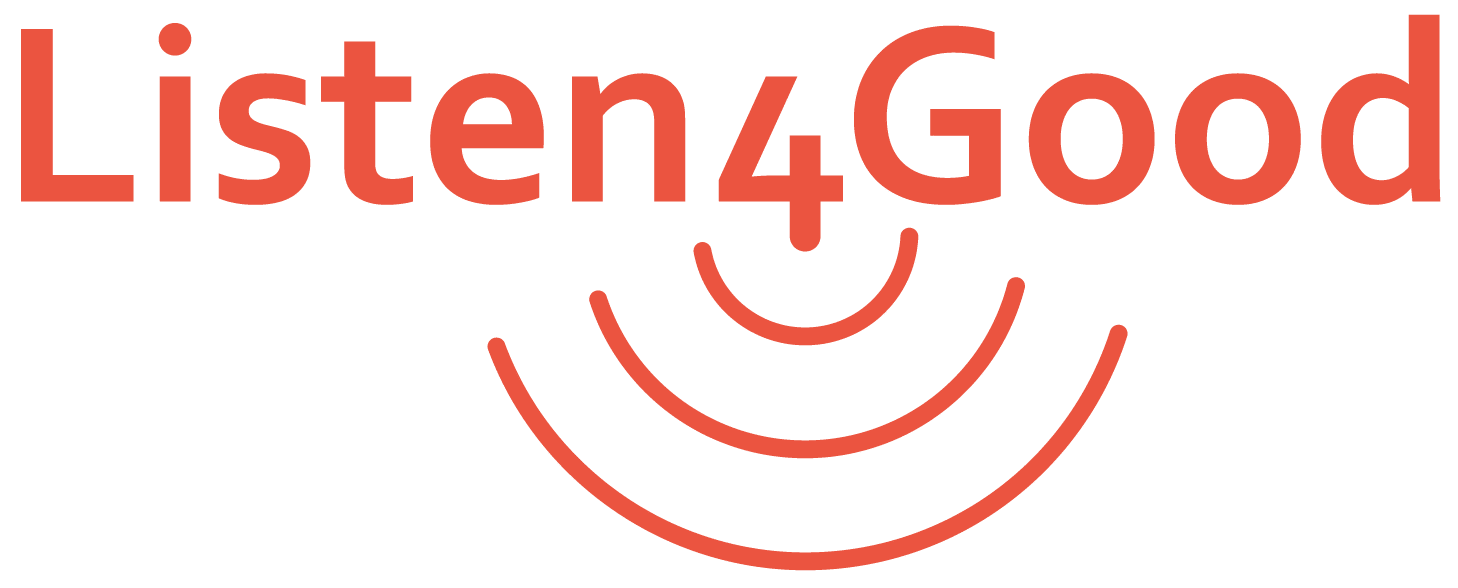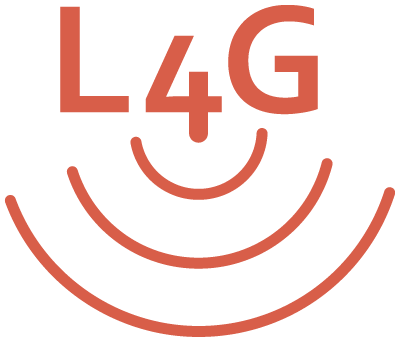Closing the Feedback Loop | Listen4Good

What Does it Mean to Close the Feedback Loop?
Closing the feedback loop is the fifth and final step of a high-quality feedback process.
Closing the loop refers to the action of letting your clients know what you heard from them, and communicating what you intend to do with that feedback. By acknowledging their feedback (especially critical feedback), you demonstrate respect for your clients, their opinions, and their voices.
In this final step, an organization will, at minimum, thank clients for participating in the survey and ideally share what they have heard and are doing in response, including areas for improvement. In particular, they should strive to share findings that may show inequities in how clients experience services (if those findings surface).
Why Closing the Feedback Loop Matters
Many organizations that ask clients for feedback never close the feedback loop. Clients are subsequently left wondering if their feedback was ever reviewed or considered. Over time, when feedback loops are not closed, clients lose trust with the organizations who are seeking their input and become cynical – rightfully so – that their feedback ever matters.
Here at Listen4Good, we consider closing the loop to thus be among the most important step in the feedback process. When completed thoughtfully and with care, it becomes an essential component of building long-term trust with your clients.
Closing the Feedback Loop Best Practices
To close the feedback loop, keep the following best practices in mind:
- Choose a clear communication method or tool. You have many ways to communicate the feedback you heard from your clients. You can create flyers, design large posters, or build a webpage, just to give a few examples. You’ll want to choose a method that will capture attention from your clients and we often recommend sticking with the communication methods that you currently use to communicate with clients. At the same time, consider getting creative and having some fun! Closing the loop does not have to be an antiseptic process – it’s one more way to engage with your clients.
- Use clear language. You’ll want to use clear, straightforward language that takes your clients into account. For example, consider their age, literacy level, languages spoken, and accessibility, to name a few issues.
- Remember that less is more. Share the big messages and findings that came out of the feedback provided. Be selective and intentional in sharing specific data points that help to illustrate the broad points you want to communicate. No one wants to read a 30 page report – make it easy for them to digest the key takeaways.
- Don’t let the perfect be the enemy of the good. There is no perfect time to share feedback and clients benefit from timely responses and closing the loop. Rather than waiting for the ideal moment or day, we recommend that you just do it! Your efforts will be rewarded, especially when you embark on your next feedback loop.
Closed Client Feedback Loop Example
Listen4Good has many examples of organizations who successfully closed the feedback loop with their clients. One such organization is Society St. Vincent de Paul Phoenix, which regularly hosts a “Family Evening Meal” in one of its charity dining rooms. SVSDP gathered feedback from participants who came to the dining room.
When it closed the feedback loop with its clients, it decided to get creative and print a paper placemat that summarized what it heard from clients, along with what the organization intended to change in response to what it heard. This ensured that clients saw the feedback and were able to see what was being done in response.
You can look over their placemats in both languages below.


Other organizations create web landing pages, newsletters, or maybe rely on talking points before classes to close the loop. You can read more examples of organizations who successfully closed the loop on our Feedback Stories page.
Listen4Good Support
Listen4Good sees closing the loop as an essential step in the feedback process and works with organizations to help them complete this fifth and final step.
Common questions that we hear from organizations as they try to close the loop include:
- What should I say to clients if we aren’t able to make changes based on their feedback?
- How much should I say when closing the loop?
- When should I close the loop with clients?
- What if I can’t close the loop with clients who actually took the survey? Who should I close the loop with?
Listen4Good works hand-in-hand to help organizations resolve these questions in a way that works for their clients and community served.
An assigned coach works with an organization to identify the best methods to communicate with clients, while the organization also participates in live training webinars and learns with peers who are also engaged in the same step. The organization also has access to a web app with a rich resource library, including tons of peer examples for how other similar organizations have closed the loop.
Additional Feedback Resources
To learn more about Listen4Good’s five step feedback loop process, you can review the approach here.
You may also find it helpful to read this blog post, Closing the Loop: How Listen4Good Changed Its Approach, on Listen4Good Insights, which reviews the way that Listen4Good applied closing the loop to its own internal practices.

